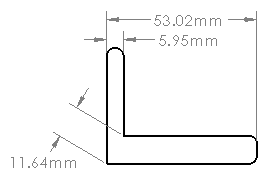Units And Dimension
 |
Any physical quantity requires a numerical value and a standard or scale for its quantitative
representation. The standard or the scale by which the physical quantity is represented is known as
the UNIT.
All physical quantities do not have unit, quantities which are represented as the ration of the two
same physical quantities do not have any unit.
Example: Refractive Index (μ) =velocity of light in vacuum/velocity of light in medium
Specific Gravity = Density of the substance/density of water
Generally we have three fundamental physical quantities
1. Mass
2. Length
3. Time
They are called fundamental because they do not require the help of other physical quantity for
their representation.
Most of the other physical quantities can be represented in terms of these physical quantities. When
a physical quantity is represented in terms of fundamental quantities it is known as dimension of
that physical quantity.
Units: Generally we have two types of units
1. Fundamental Unit
2. Derived Unit
Fundamental Unit: The units of fundamental quantities are known as fundamental units.
Derived Unit: The units of all other physical quantities which can be derived from the fundamental
units are known as derived units.
System of Units: We have the following system of fundamental units
The MKSA was un‐rational system later MKSA was rationalised by introducing special constant and is
known as International System of Unit (SI unit).
Derived Unit: To find derived unit of a physical quantity we must write the dimension of that
physical quantity.



Comments
Post a Comment